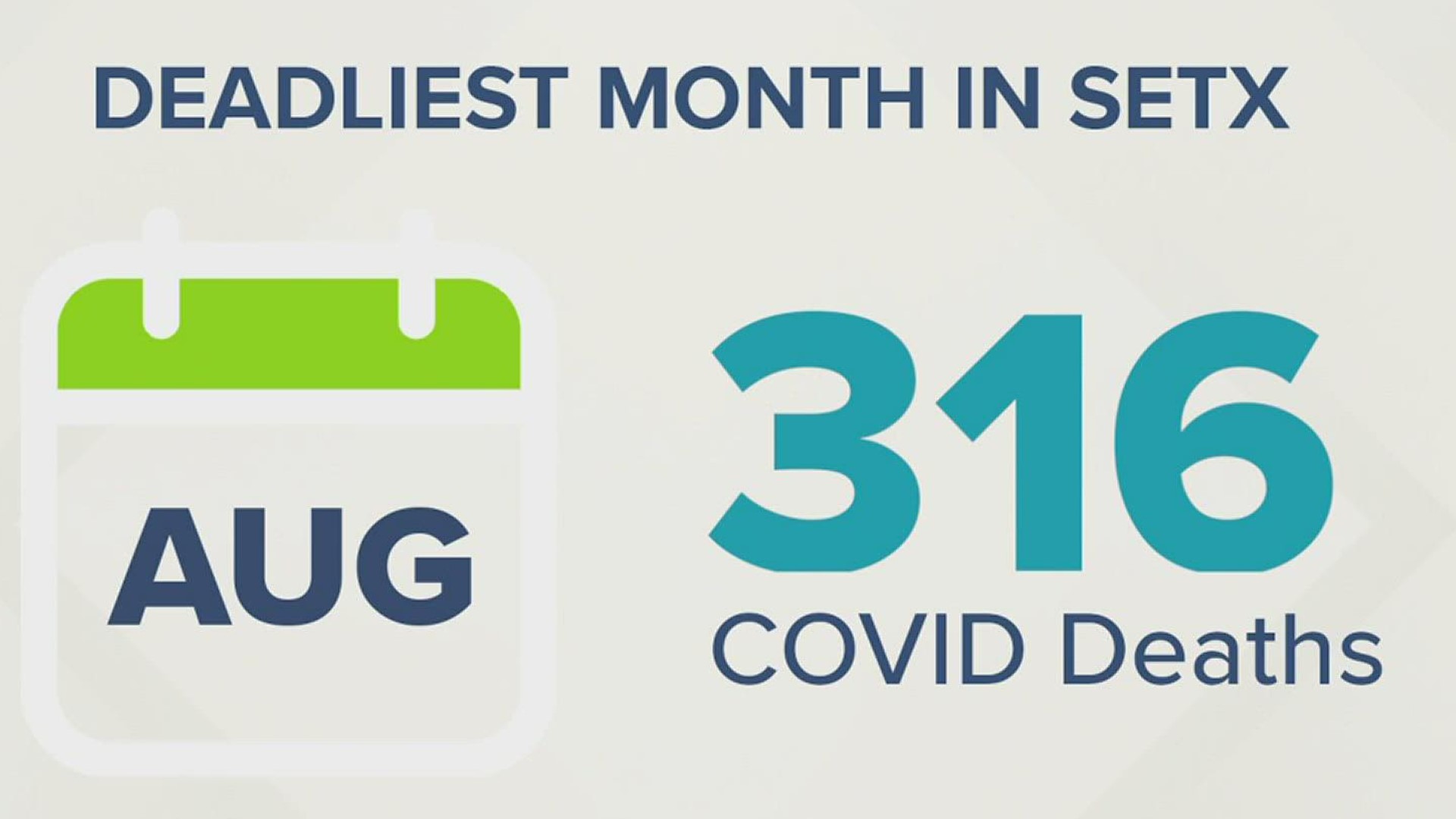BEAUMONT, Texas — It appears Southeast Texas has made a turn. COVID-19 hospitalizations in the region are continuing to decline.
As of Wednesday night, the region is down to a total of 145 COVID-19 patients in Jefferson County hospitals.
That takes us back to late July numbers. What's leading to this decline, and what do doctors think will come next?
Doctors said it's hard to pinpoint one reason for the decline in cases. Some of it has to do with less travel after Labor Day weekend and more Southeast Texans getting vaccinated.
For the past few months, the fight against COVID has been one-sided.
"Being helpless honestly, when you have patients that are sick and you see them decline, knowing you can't do anything about it. You can't stop it," said Dr. Msonthi Levine, internal medicine physician.
In August 2021, Southeast Texas saw the most deaths since the start of the pandemic.
"The hallways in the emergency department used to be littered with patients, just about every space imaginable. They were having to create space where there was no space," Levine said.
Levine is in the hospitals every day. He said things have finally slowed down in the last few weeks.
"It seems the volume has gone down quite drastically, I would say two weeks ago I had several COVID patients at St. Elizabeth, and now, [I] don't have any," Levine said.
Southeast Texas was averaging 97 cases a day in February. By July that jumped to 105 cases but in September, we had 403 a day, and on Wednesday, that number is 255.
"Several things that have really helped quiet the pandemic down, but as the experts mention the virus is still in the community, and there can still be some caseloads," said Dr. Praphul Joshi, associate professor, public health, at Sam Houston University.
Joshi said a few factors may be leading to the drop.
"One, like I said, the end of summer peak travel season, and the rate of immunizations slightly increased around late August to mid-September," Joshi said.
But, Joshi said numbers now are similar to those in the first surge in January. He knows we aren't out of the woods just yet.
"We still have a good ways to go before we can take a little bit of a breather in the healthcare system,” Joshi said.
Levine said he thinks vaccine mandates may also be helping to curve the spread. With booster shots becoming more available, both doctors hope that could be another step in the right direction.

